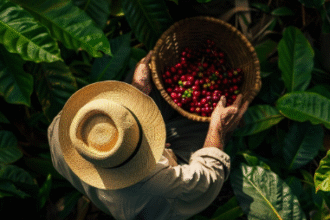Introduction to chinatown hawker leftovers consumption
Chinatown is a feast for the senses, where vibrant colors and tantalizing aromas intermingle in bustling hawker centers. These culinary hubs serve up an array of delicious dishes that often leave diners with more than they bargained for—leftovers! While many may think twice before tackling yesterday’s meal, the practice of consuming Chinatown hawker leftovers is steeped in tradition and flavor. More than just a way to save money or reduce waste, it’s an experience that connects us to the heart of this rich culture. Join us as we dive deeper into what makes these leftover delights so special and how they can enhance your dining adventures in Chinatown.
The Cultural Significance of Hawker Centers in Chinatown
Hawker centers in Chinatown are more than just food courts; they are vibrant social hubs. Here, diverse communities gather to share meals, stories, and laughter. The lively atmosphere is a reflection of the rich cultural tapestry that defines the area.
Each stall tells a story through its dishes—steamed buns, spicy noodles, fragrant rice. These offerings connect generations and preserve culinary traditions handed down through families.
Food becomes a bridge between cultures as flavors from various regions mingle together. Visitors can savor authentic recipes while interacting with passionate hawkers who take pride in their craft.
Moreover, these centers foster community spirit. They encourage locals and tourists alike to sit side by side over shared tables, making every meal an opportunity for connection and understanding.
In this way, hawker centers play a crucial role in Chinatown’s identity, celebrating both heritage and modernity through the simple act of eating together.
Common Leftover Dishes and their Origins
Chinatown hawker centers are a treasure trove of culinary delights. Leftover dishes often reflect the rich tapestry of cultures that characterize these vibrant food hubs.
One popular leftover is char kway teow, a stir-fried noodle dish originating from Teochew and Hokkien cuisines. Its savory flavor lingers long after the last bite.
Another beloved option is nasi lemak, which features fragrant rice paired with sambal and various accompaniments. This Malay dish has made its way into many Chinese eateries, showcasing a beautiful blend of flavors.
Curry laksa also makes the list, with its spicy coconut broth and chewy noodles. It’s no wonder this comforting dish finds its way home as leftovers; each reheated bowl brings back memories of bustling hawker stalls.
These dishes not only satisfy hunger but also tell stories—of heritage, community, and shared experiences in Chinatown’s lively atmosphere.
Advantages and Disadvantages of Consuming Hawker Leftovers
Consuming hawker leftovers can be a delightful experience. You often discover hidden gems of flavor that were once popular but didn’t sell out completely. It’s like getting a second chance to savor those beloved dishes.
On the flip side, there are some considerations to keep in mind. Not all leftovers maintain their quality or taste after sitting for a while. Texture and freshness may diminish, which could alter your dining experience significantly.
Another advantage is cost savings. Leftovers are generally more affordable than freshly prepared meals. This makes indulging in your favorite hawker fare easier on the wallet.
However, food safety cannot be ignored. Improper storage or handling might lead to health risks if consumed too late or without proper care. Balancing enjoyment and caution is key when diving into the world of leftover delights at Chinatown hawker centers.
Tips for Safe Consumption of Hawker Leftovers
When enjoying Chinatown hawker leftovers, safety should be your top priority. Start by storing them properly. Use airtight containers to keep food fresh and prevent contamination.
Make sure to refrigerate leftovers within two hours of eating. This minimizes the risk of bacterial growth. If you’re unsure about how long something has been sitting out, it’s better to err on the side of caution and avoid it.
Before consuming any leftover dish, give it a good sniff. If anything smells off or unusual, don’t take the chance—toss it out.
Reheat your meals thoroughly before eating again. Aim for an internal temperature of at least 75°C (165°F). This ensures that harmful bacteria are killed off effectively.
Trust your instincts! If something looks or feels questionable, it’s wise not to consume it. Enjoying hawker leftovers can be delightful with just a bit of mindfulness toward safety.
Sustainability in the Hawker Industry: Reducing Food Waste through Leftover Consumption
Sustainability in the hawker industry is becoming increasingly important. As food waste continues to rise, many hawker centers have found innovative ways to address this issue through leftover consumption.
By encouraging patrons to enjoy leftovers, these establishments not only minimize waste but also promote a culture of sharing and resourcefulness. Leftovers often carry rich flavors that improve with time, making them a delightful option for those adventurous enough to explore yesterday’s dishes.
Moreover, some vendors are adopting creative techniques like repurposing their unsold items into new meals. This practice not only saves ingredients from being discarded but also introduces customers to inventive culinary experiences.
To further enhance sustainability, educational initiatives around leftover consumption can inspire diners. By highlighting the environmental impact of food waste and showcasing delicious ways to enjoy leftovers, hawker centers contribute meaningfully towards a greener future while celebrating beloved local cuisine.
Conclusion: Embracing the Tradition and Flavor of Chinatown Hawker Leftovers
Embracing the tradition of Chinatown hawker leftovers brings a unique blend of flavors and cultural significance to our dining experiences. These culinary remnants tell stories of vibrant heritage, communal eating, and the delicate balance between savoring every bite while reducing waste.
The variety of dishes available in Chinatown’s hawker centers offers endless opportunities for discovery. From fragrant Hainanese chicken rice to spicy laksa, each leftover dish holds its own charm and history. Enjoying these meals not only satisfies hunger but also connects us with the rich tapestry of traditions that make up the local community.
Understanding how to safely consume these delicious leftovers ensures that we can enjoy them without worry. Simple practices like proper storage and reheating play a vital role in making sure those flavors remain intact while keeping food safety at the forefront.
Moreover, by embracing leftover consumption, we contribute positively towards sustainability within the hawker industry. This practice reduces food waste significantly while supporting local businesses striving for environmental responsibility.
Chinatown hawker leftovers consumption is more than just a meal; it’s an experience steeped in respect for culture and community values. By relishing these dishes, we honor their origins while continuing a long-standing tradition that enriches our lives through flavor and connection.

















